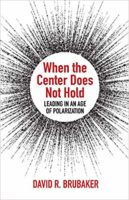
Denominational headcounts have declined sharply in recent decades, reflecting both the overall drop in religious affiliation and the rise of nondenominational churches. In this new religious landscape, congregational leaders are considering new options for affiliation.
Protestant denominations, like their Roman Catholic and Orthodox counterparts, historically provided three important benefits to local congregations and their members:
- Identity and belonging, based on theology and in some cases on ethnicity.
- Training and credentialing of ministers, as well as accountability mechanisms for errant leaders.
- Shared resources to provide educational, health care, relief and development, and other services to member congregations and beyond.
The ethno-religious denominations that migrated from Europe (including English Methodists, Scottish Presbyterians, and German Lutherans) became increasingly diverse as they embedded in the American context. By the time of the Civil War, regional and political differences in the U.S. overwhelmed the earlier homogeneity of these traditions. Until the recent round of disaffiliations, there was often more theological diversity within a given denomination than between denominations. Once-distinctive denominational identities became increasingly blurred.
In the last two decades, both denominational and nondenominational seminaries have seen enrollment declines and a shift to online education. To cope with declining enrollment, many seminaries were prompted to sell part or all of their properties or to downsize their programs. (Interestingly, a slight majority of Roman Catholic and Orthodox seminaries experienced growth in the most recent reporting year.)
Finally, many denominational initiatives in education, relief and development, and health care have spun off as independent not-for-profit organizations. Despite these shifts, what I observed in 2017 is still true: denominations occupy a relevant space in the religious landscape. Denominations matter when they focus on identity, build connections, and share resources.
Beyond Denominational Boundaries
Yet many congregations are finding meaningful connections beyond their denominational boundaries. Here are three examples:
Local Associations. In many communities, clergy and other people of faith gather in local associations. The purpose of such associations ranges from encouraging ecumenical and interfaith fellowship to collective action and public policy advocacy. In my own community of Harrisonburg and Rockingham County, Virginia, Valley Interfaith Action encompasses 23 religious congregations, including the local synagogue and mosque, and eight labor and nonprofit organizations.
National Networks. As denominational loyalty withered a variety of networks emerged to meet the affiliation needs of local congregations. While these networks generally do not offer the range of services of traditional denominations, they often sponsor training events and networking opportunities. One example in my own tradition is known as Evana, “a ministry community of pastors and churches with a heart to see lives transformed by the Gospel of Jesus Christ.” A number of nondenominational megachurches also offer leadership development and other resources to other congregations.
Global Connections. In an increasingly connected world, global gatherings (whether in-person or virtual) are becoming nearly as common as national ones. Last month’s Lausanne Conference in South Korea gathered more than 5,000 evangelicals from more than 200 countries around the world for a focus on global mission. And a variety of religious traditions hold shared global gatherings, such as Mennonite World Conference that convenes every six years in various parts of the world.
Ties That Bind
Denominations offer identity, accountability, and resources. Local, national, and global associations offer connections, networking, and opportunities for collective action. Congregations need both—albeit staying connected with one’s denomination while also engaging local, national, and international networks can be exhausting. Thus, the reality of multiple associational options implies that clergy alone will be incapable of maintaining the relational capital that is required. Clergy and lay leaders will need to partner together to strengthen the ties that bind.
Congregations, like individuals, are nested in a web of relationships that may include denominational “families,” and often extend to “friends” beyond the family system. Prioritizing where to connect and then working to build healthy relationships requires conscious attention and regular maintenance. I would suggest that leadership groups consider three questions when discerning where, and how, to connect:
- Identify the benefits, and costs, of your denominational affiliation. What is gained by continued identification with your denomination, and what would be lost if such a connection would be broken?
- Identify the benefits, and costs, of local, national, and global affiliations beyond your denomination. What is gained by participation in these networks, and what would be lost if the connections were not maintained?
- Most importantly, identify the individuals or groups who will be responsible for maintaining the relationships going forward.
Denominational loyalty is declining and associational options are increasing. But the congregational imperatives of a clear identity, need for accountability, demand for resources, and desire for connection have not changed. Every congregation will continue to require these basic attributes…the main question today is where they will find them.
David Brubaker has consulted with organizations and congregations in the U.S. and a dozen other countries on organizational development and conflict transformation. He is the author of Promise and Peril, on managing change and conflict in congregations, and When the Center Does Not Hold, on leading in an age of polarization. David recently retired from his role as Dean of the School of Social Sciences and Professions at Eastern Mennonite University, and is now a Professor Emeritus of Organizational Studies.


